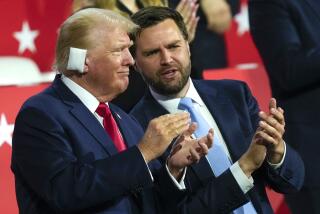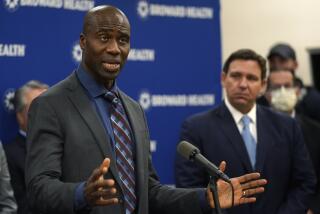Letters to the Editor: Polio-era epidemiologist warns: Trump’s ‘warp speed’ vaccine effort may be dangerous
To the editor: Reporter Daniel Miller’s review of Dr. Jonas Salk’s legacy and your editorial on the Trump administration’s “warp speed” effort to develop and distribute a coronavirus vaccine are déjà vu warnings from the polio era.
As a young Epidemic Intelligence Service Officer in 1956, I was the lead agent from the Center for Disease Control working with the Chicago Board of Health on its 1,500-case polio outbreak. As someone with 65 years’ experience in infectious disease and epidemiology, I offer a warning from the errors and lack of oversight in the Salk vaccine saga that resulted in avoidable tragedy.
Salk’s research actually implied that each lot of his killed-virus vaccine would require sophisticated testing to ensure that no live virus remained. But this caveat was not adequately conveyed to the several pharmaceutical companies rushing to produce vaccine. Importantly, federal law at the time did not require or permit direct involvement of U.S. Food and Drug Administration scientists in confidential monitoring of the production process, which is required today.
Cutter Laboratories, inexperienced in viral research, failed to detect live virus in multiple lots. The resulting thousands of children infected and several deaths is called the Cutter Incident. Other companies’ vaccines also caused infections. In fact, all companies had found live virus in numerous lots never distributed, but never disclosed to the FDA. The production issue was resolved, but it took a massive public re-education effort in order to resume the life-saving program.
In the “warp speed” push for a COVID-19 vaccine, the Trump administration’s anti-science policies and budget cuts to key agencies, its silencing of scientists like Dr. Rick Bright, and its suppression of CDC’s detailed safe opening guidelines are dangerous to the public’s health not only in America, but worldwide.
Lauri D. Thrupp, M.D., Santa Ana
The writer is a professor of medicine emeritus at UC Irvine.
..
To the editor: On May 25, 1961, President John F. Kennedy announced in a joint session of Congress his goal of sending a man to the moon before the end of the decade.
At that moment, NASA had conducted only one 15-minute human spaceflight. Not everybody was impressed, and the optimistic and upbeat announcement by the president was received with skepticism. According to a Gallup poll, 58% of Americans were opposed to Kennedy’s moon shot.
However, despite the skeptics, by the end of the decade Kennedy’s dream became a reality.
Now, President Trump’s dream of having a vaccine for the deadly coronavirus before the end of the year is received not only with disbelief but also disdain. Why? With so many scientists and laboratories working feverishly to find a cure, is it wrong to think that somebody will find an answer to end this crisis?
Sometimes, “accidental discoveries” have occurred in some of medicine’s most important advances. Let’s hope this time someone has an “Eureka” moment.
Raul De Cardenas, Los Angeles
..
To the editor: In reading your editorial on the time it will probably take to research, manufacture and distribute a COVID-19 vaccine, I was reminded of my experience during the polio epidemic of the 1950s.
I was 13 years old when three of my childhood friends died in one week. Still, it wasn’t until I was in college that Salk’s vaccine became available.
Patricia Langdon, Cypress
More to Read
A cure for the common opinion
Get thought-provoking perspectives with our weekly newsletter.
You may occasionally receive promotional content from the Los Angeles Times.










